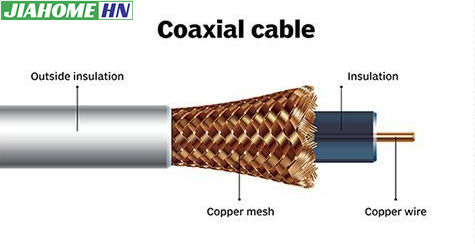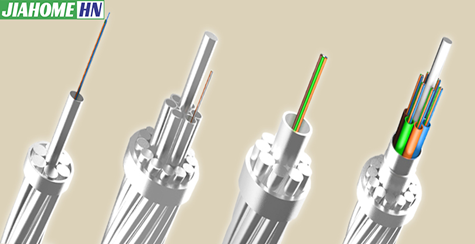Differentiating between coaxial and optical fiber cables is straightforward once you know what to look for. The primary distinctions lie in their construction, appearance, and the way they transmit information. In short, coaxial cables use electricity to transmit data through a copper core, while optical fiber cables use pulses of light that travel through thin strands of glass.
Visual Inspection: The Easiest Way to Tell
The most immediate way to distinguish between the two is by their connectors and the cable’s thickness and flexibility.
Coaxial Cables: These are generally thicker and less flexible than optical fiber cables. The most common type you’ll encounter in a home setting is the RG-6, which has a screw-on F-type connector. This is the same type of cable traditionally used for cable television. The connector has a small pin in the center that is inserted into a threaded port.
Appearance: Typically round and relatively stiff. The outer jacket is often black, white, or brown.
Connector: A metal, screw-on connector with a central pin.
Optical Fiber Cables: These are often thinner and more flexible than coaxial cables. For home audio or internet connections, they use a specific type of connector, commonly a TOSLINK (Toshiba Link) or SC/LC connector.
Appearance: Can be very thin, sometimes similar in diameter to a standard USB cable, and are generally more pliable. The color of the cable jacket can vary, with orange, aqua, and yellow being common for different types of fiber.
Connector: Typically a square or rectangular plastic connector that clicks into place. TOSLINK connectors, often used for audio, have a distinct square shape with a small, hinged protective cap over the tip.
| Feature | Coaxial Cable | Optical Fiber Cable |
| Transmission Medium | Electrical signals through a copper conductor. | Pulses of light through glass or plastic fibers. |
| Speed & Bandwidth | Lower bandwidth and slower speeds. While it can support high-speed internet, it is more limited, especially for upload speeds. | Significantly higher bandwidth and much faster speeds, capable of symmetrical upload and download speeds. |
| Interference | Susceptible to electromagnetic interference (EMI) and radio frequency interference (RFI), which can affect signal quality. | Immune to EMI and RFI, resulting in a more stable and reliable signal. |
| Signal Degradation | Signal strength can degrade over longer distances, requiring amplifiers. | Can transmit data over very long distances with minimal signal loss. |
Common Applications
Coaxial Cable:
Cable Internet (DOCSIS): Connecting the modem to the wall outlet for internet service from a cable provider.
Cable Television: The traditional method for delivering cable TV channels.
Satellite Television: Connecting the satellite dish to the receiver.
CCTV: Often used in older closed-circuit television security systems.
Optical Fiber Cable:
Fiber-to-the-Home (FTTH) Internet: Providing high-speed internet directly to a residence. The fiber optic cable will connect to an Optical Network Terminal (ONT).
High-End Audio: Connecting audio components like soundbars, receivers, and gaming consoles for high-fidelity digital audio (often using a TOSLINK connector).
Data Centers and Networking: The backbone of modern communication networks due to its high capacity and reliability.
Post time: Aug-07-2025



